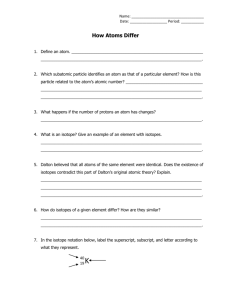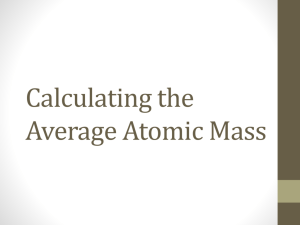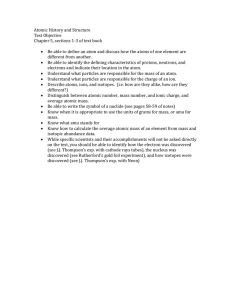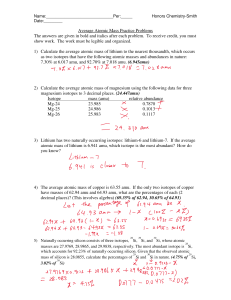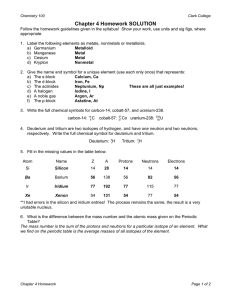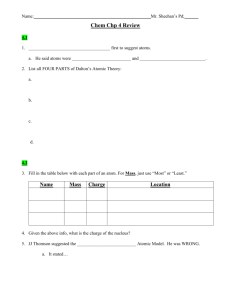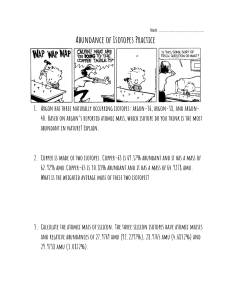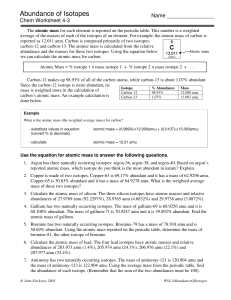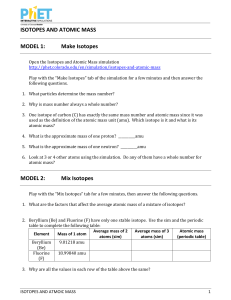– Unit 5 Worksheet 2 Honors Chemistry Analyzing a Spectrograph
advertisement
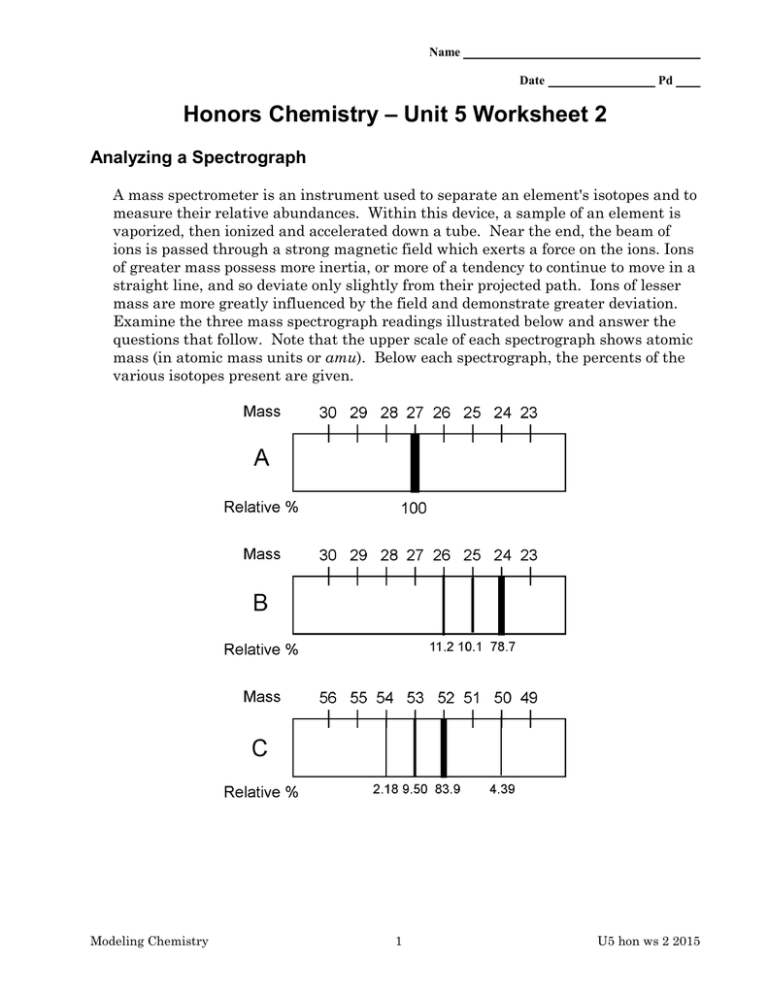
Name Date Pd Honors Chemistry – Unit 5 Worksheet 2 Analyzing a Spectrograph A mass spectrometer is an instrument used to separate an element's isotopes and to measure their relative abundances. Within this device, a sample of an element is vaporized, then ionized and accelerated down a tube. Near the end, the beam of ions is passed through a strong magnetic field which exerts a force on the ions. Ions of greater mass possess more inertia, or more of a tendency to continue to move in a straight line, and so deviate only slightly from their projected path. Ions of lesser mass are more greatly influenced by the field and demonstrate greater deviation. Examine the three mass spectrograph readings illustrated below and answer the questions that follow. Note that the upper scale of each spectrograph shows atomic mass (in atomic mass units or amu). Below each spectrograph, the percents of the various isotopes present are given. Modeling Chemistry 1 U5 hon ws 2 2015 l. a. b. What is the atomic mass in amu of the isotope of the element represented by spectrum A? What is the name and chemical symbol of element A? 2. a. Based on the experimentally obtained values of mass and percent abundance, calculate the average atomic mass in amu of element B. Show your work. b. What is the name and chemical symbol of element B? Identify the number of neutrons, protons, and the mass number of each isotope of element B. c. Which of element B’s isotopes deviated MOST from its straight-line path? How do you know? 3. a. Calculate the average atomic mass in amu of the element C. Show your work. b. What is the name and chemical symbol of element C? Identify the number of neutrons, protons, and the mass number of each isotope of element C. c. Which of element C’s isotopes deviated the LEAST from its straight-line path? How do you know? Modeling Chemistry 2 U5 hon ws 2 2015

